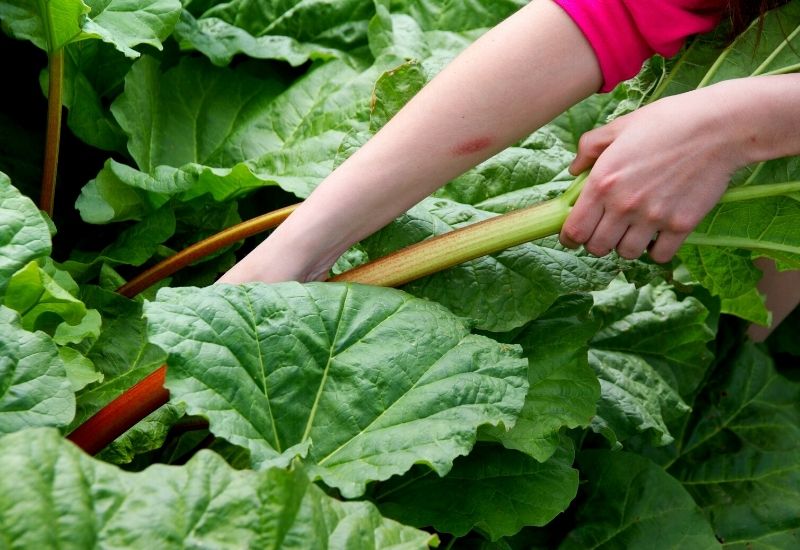
Rhubarb is an easy growing, cool-season vegetable that should have a spot in every home garden. Despite being used in countless desserts, rhubarb is actually a vegetable and this hardy perennial will give you several harvests each year.
But, before you take your pickers and head to the garden, it’s important to know when to pick rhubarb for the best flavor and fruit quality and how harvest stalks properly, so they will return year after year.
The best time to harvest rhubarb plant is when stalks reaches 12 and 18 inches (30 and 46 cm) long and 1⁄2 and 1 inch (1.3 and 2.5 cm) wide, and ripe rhubarb can be harvested from early spring until mid-July. To harvest, pulling out the stalks instead of cutting them will make the rhubarb plant healthier and more productive.
Rhubarb is as easy to harvest as it is to grow. In this article, we will discuss how to tell when your rhubarb is ripe, and how to pick stalks from a rhubarb plant for a continuous harvest.
What Parts Of Rhubarb Can I Eat?
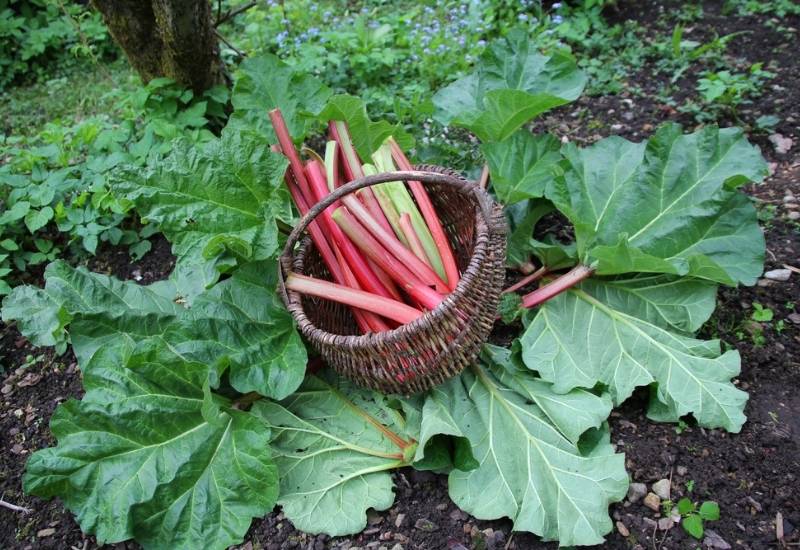
The rhubarb’s petiole (or stalk) is a sour, edible vegetable. You should not eat the leaves, as they contain high amounts of oxalic acid, which can lead to vomiting, diarrhea, and ultimately kidney failure.
Oxalic acid is actually found in all parts of the plant, including the stalks, and this is where the sour taste comes from.
Yet the amount of rhubarb you consume would have to be very high to cause issues. Here is a link to an article that discusses further health concerns of eating rhubarb leaves.
Does rhubarb become poisonous in the fall? Many of us grew up being told that after the summer, rhubarb becomes poisonous.
An old tradition, it is based on the belief that oxalic acid will increase during the summer. It is probably untrue, and I have eaten rhubarb from my garden in August with no ill effects.
Some evidence suggests, however, that oxalic acid might transfer to the stalks when rhubarb leaves wilt or become frosted
Is It Possible To Harvest Rhubarb In Its First Season?
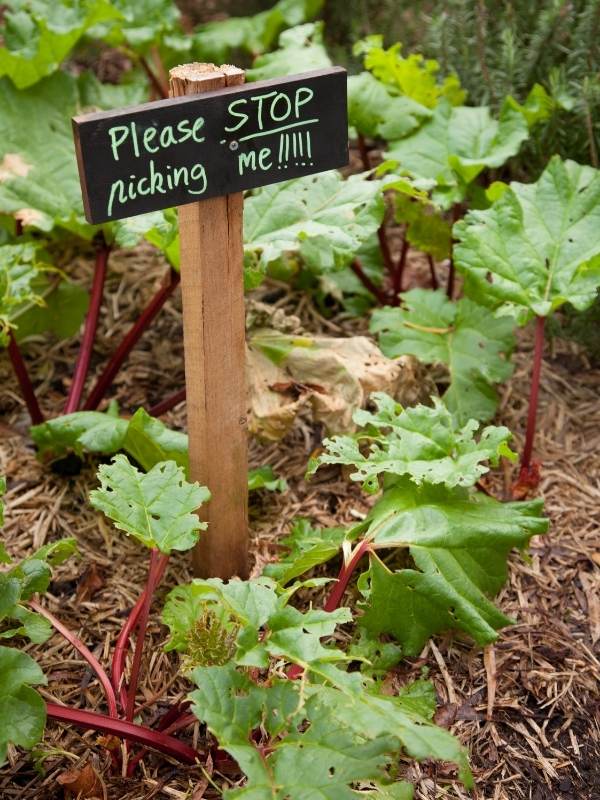
Depending on what method you used to start your rhubarb, the answer to this question may vary. Root cuttings, bare root plants, potted plants, or seeds can be used to grow rhubarb, and each takes a different amount of time to establish itself before it can be harvested.
When Is The Best Month To Harvest Rhubarb?
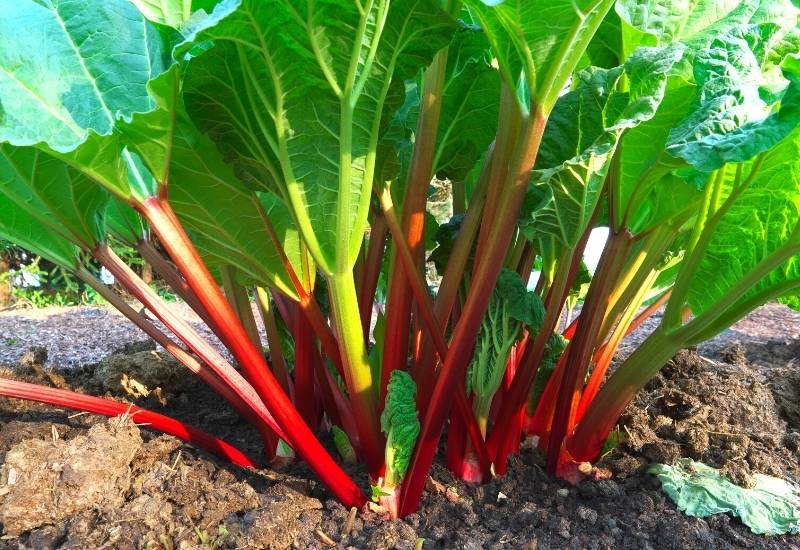
Harvest your rhubarb from early spring until mid-July. After this, its growth and quality are reduced, and rhubarb stalks will wilt and rot quickly in the heat.
During its peak growth in the spring and early summer, there are several different ways to harvest your rhubarb.
You might be lucky enough to get a third harvest before summer hits. Our zone 2b climate allows us to pick stalks in late May and our first harvest is generally mid-June, then the second harvest is early to mid-July.
What Time Of Day Rhubarb Be Harvested?
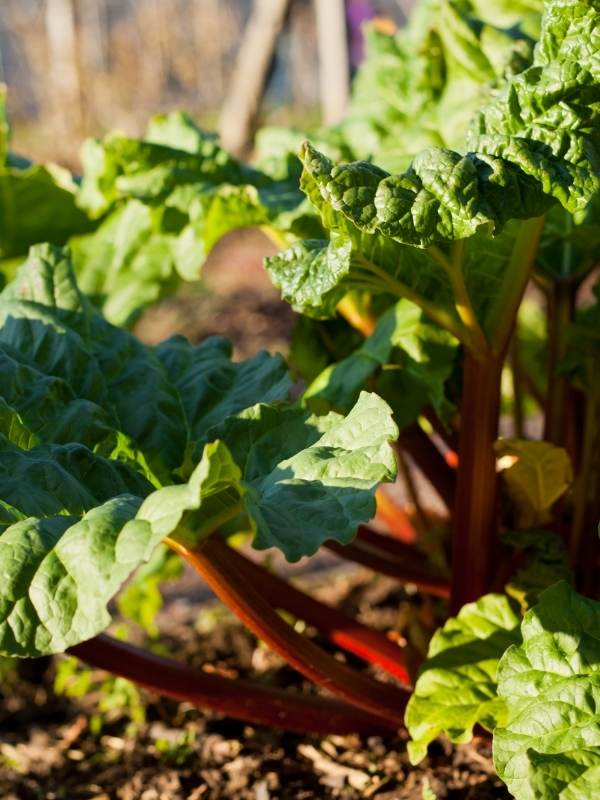
For the best results, rhubarb should be harvested in the morning. On cool nights, the plants take up water and use starches to create sugar which is still in the plant in the morning.
Due to its thick leaves and tough stalks, rhubarb plants are less likely to wilt from the heat than some of your garden’s more delicate vegetables. When harvesting during the summer, keep the newly picked stalks shaded to keep them from drying out.
How Much Does A Rhubarb Plant Produce?
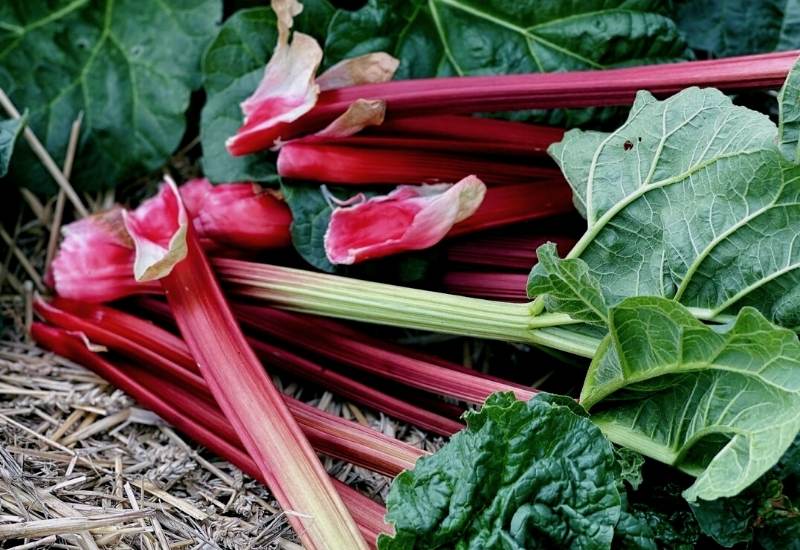
Your rhubarb plant’s yield will differ greatly by variety, growing conditions, and climate. According to most online references, you should plant 2 to 3 plants per person, and each plant’s yield should range between 1 kilogram and 3 kilograms (2-6 pounds).
We get upwards of 10kg per harvest (22lbs) from our garden, so one plant is more than enough for us.
How To Tell If Rhubarb Is Ready To Pick?
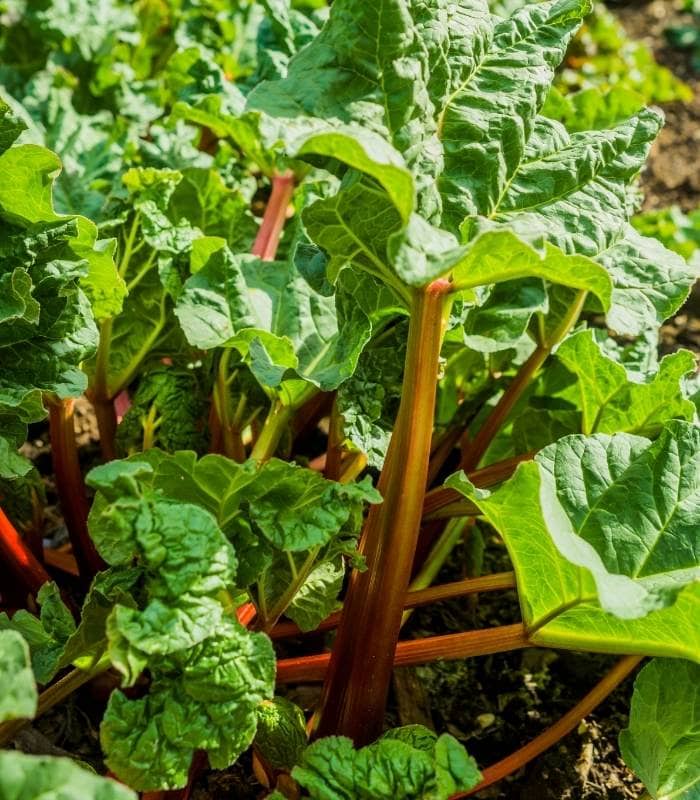
Rhubarb stalks’ sizes are the best indication of when when rhubarb is ripe ready to harvest.
You can tell if your rhubarb is ready to pick or not by checking the following:
Do Rhubarb Flowers Affect Harvest?
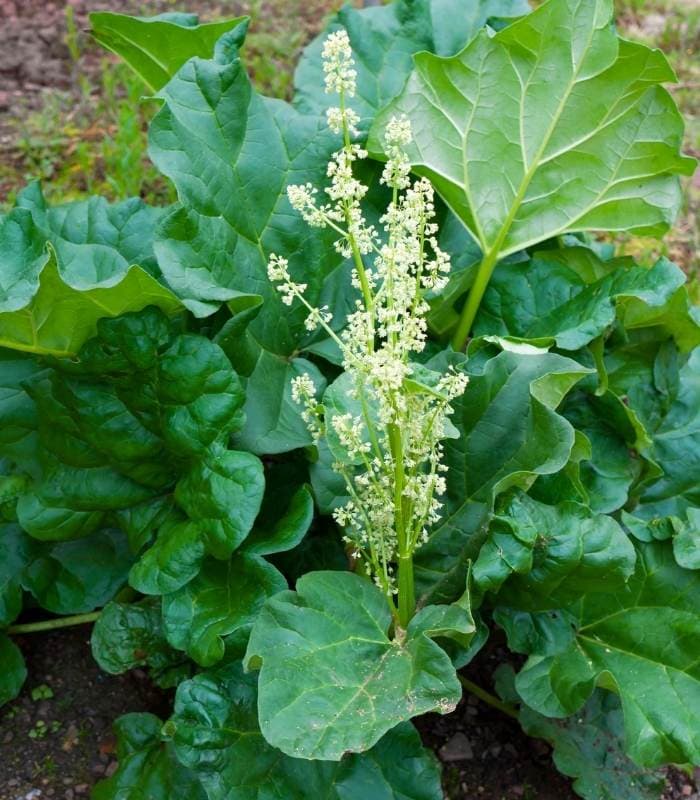
You can probably expect your rhubarb plant to produce flowers and go to seed at some point. Summer is usually when rhubarb flowers, but late spring is often when it begins to send up flower stalks.
The stalks of the flowers themselves are inedible and woody, but you can still get a fine harvest from the remainder of the stalks.
As soon as a flower blooms, all of the plant’s energy is spent on producing seeds. In order to promote new stalk growth, it is best to remove blossom buds early in the season.
As soon as your harvest is completed, you can either leave the buds to go to seed or remove them. It has been equally successful to remove or leave the buds.
How to Harvest Rhubarb the Right Way
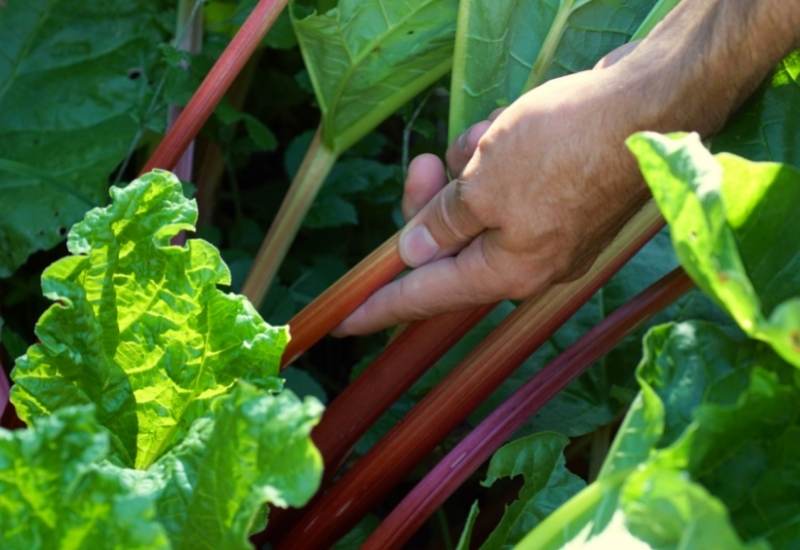
Rhubarb is easily harvested by hand. Here are some simple steps for picking rhubarb.
Storing And Preserving Your Rhubarb Harvest
In addition to storing very well, rhubarb also preserves well. You can keep your harvest in the following ways:
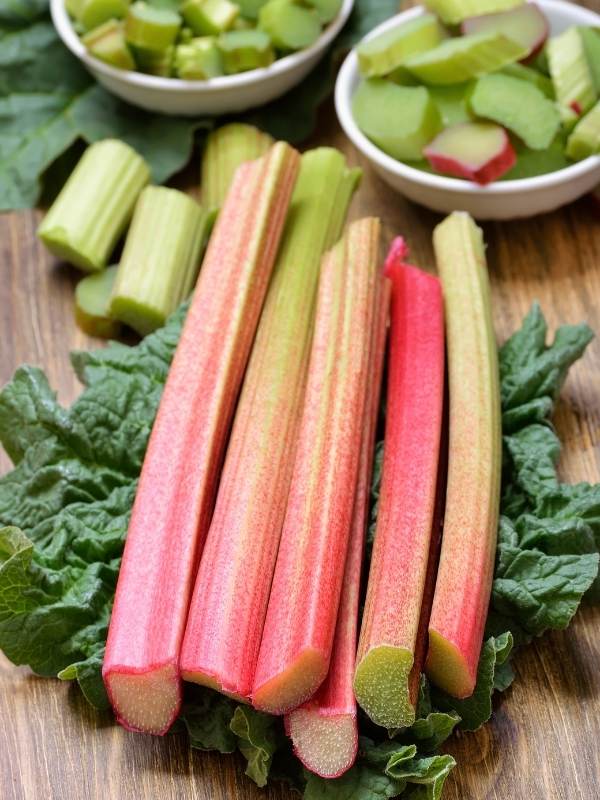
Conclusion
Many rhubarb plants will produce for over 20 years. It is important to know when and how to harvest this perennial so you can enjoy it year after year.
I hope this article has given you enough information so you can make the most of your prolific rhubarb plant.
Now it is time to buy a lot of sugar and get baking!

Written By
Amber Noyes
Amber Noyes was born and raised in a suburban California town, San Mateo. She holds a master’s degree in horticulture from the University of California as well as a BS in Biology from the University of San Francisco. With experience working on an organic farm, water conservation research, farmers’ markets, and plant nursery, she understands what makes plants thrive and how we can better understand the connection between microclimate and plant health. When she’s not on the land, Amber loves informing people of new ideas/things related to gardening, especially organic gardening, houseplants, and growing plants in a small space.

Love all the explanations. I have always pulled the stalks, but saw someone cut them and wondered which was the best way. Thanks!
Don’t cut those rhubarb stalks! it’s a bad idea. When stalks are sliced with a knife, the part left behind withers away.
I have a ton left still and it is September, is it ok to eat those or are the toxi s to high?
You can harvest rhubarb in September and it is useable if a little less tender than in the spring, but they don’t become become toxic or poisonous. If you’re craving some rhubarb go ahead and cut a few stalks.
Hi,I have planted a rhubarb crown in spring this year,all the advice is not to harvest in the first year.My question what do I do with the stalks the plant has produced this year ?
we have a terrible grasshopper problem. How to remedy???
Grasshoppers hate the smell of cayenne pepper, garlic, and onion. Mixing both substances with water and making a spray is the greenest solution you can make.
Thank you for the info. I am never sure when to harvest